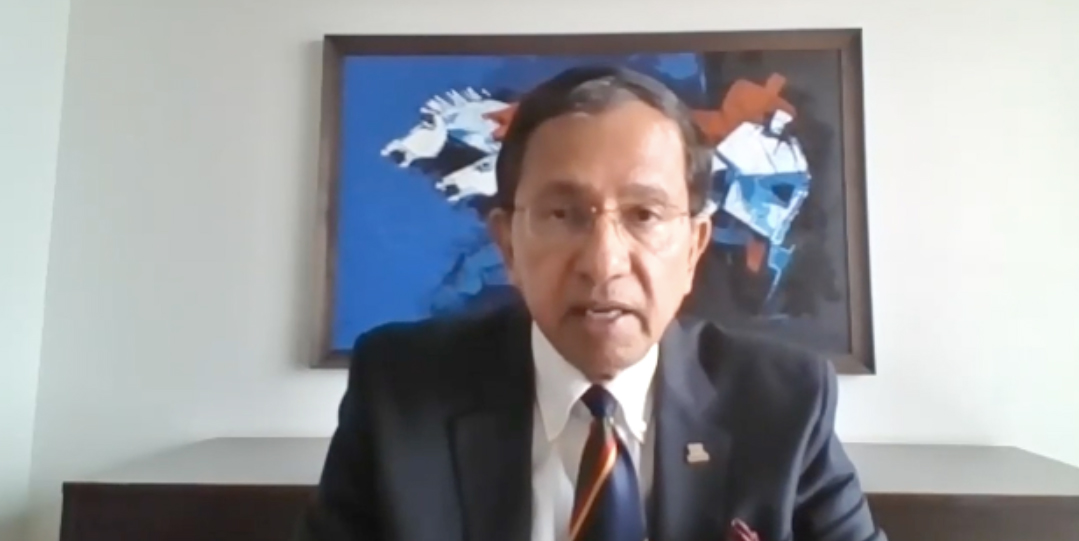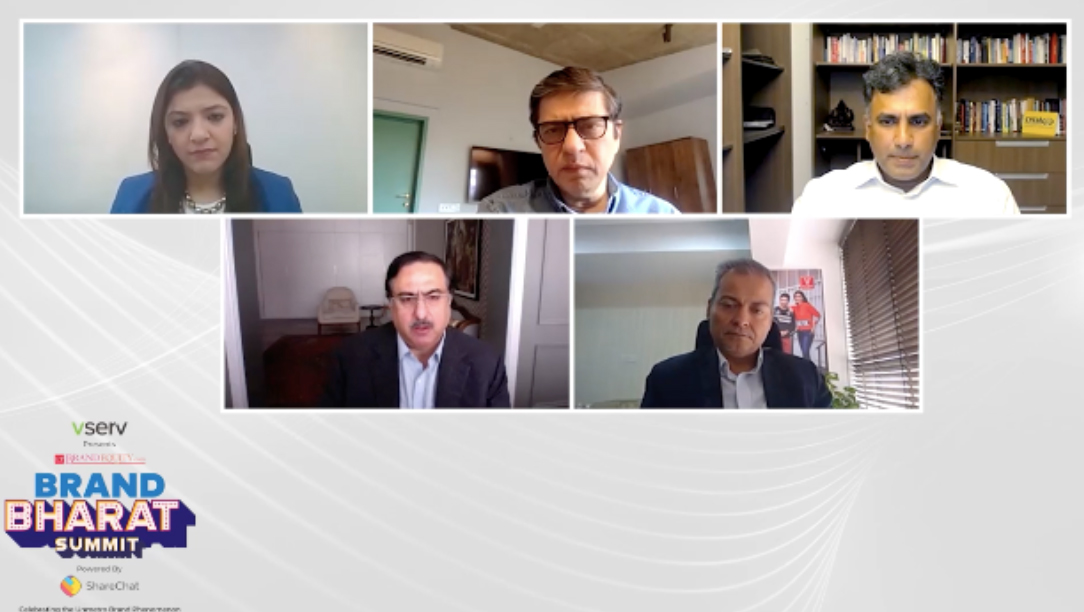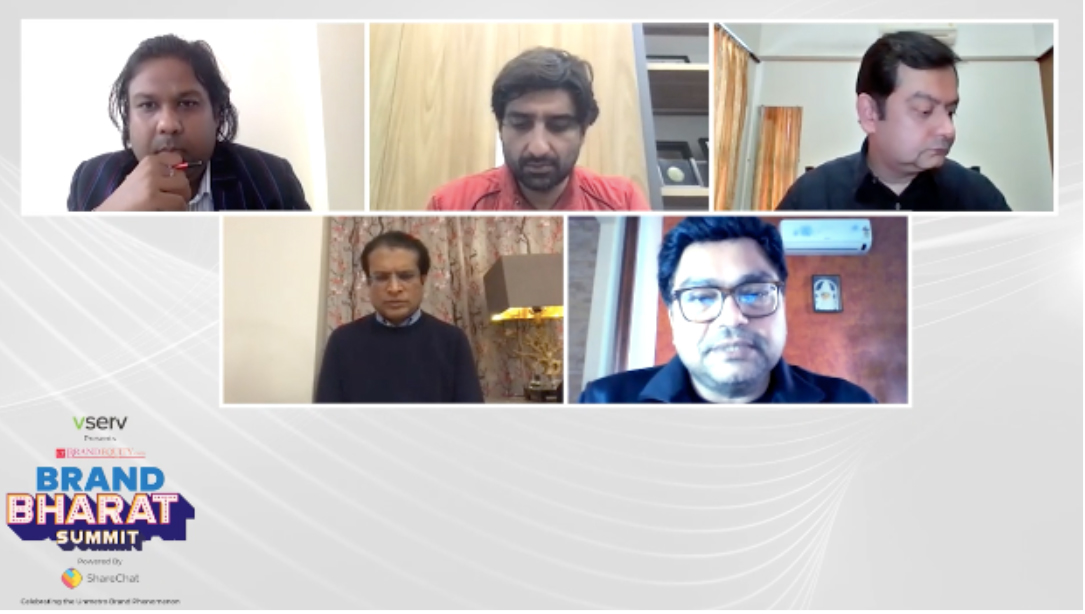
DIpil Das
Introduction
Coresight Research attended the inaugural edition of the Brand Bharat Summit, a virtual event focusing on the Bharat market (Tier 2 and Tier 3+ cities and villages in rural India), on January 27, 2022. The event was hosted by ETBrandEquity.com, the online marketing and advertising portal of Indian media conglomerate Times Group. It brought together C-suite executives and industry leaders of regional and national brands to participate in panel discussions and knowledge sessions on key themes and trends in the Bharat market. In this report, we present our top insights from the summit.Brand Bharat Summit: Coresight Research Insights
A Regional Focus in the Bharat Market Is Key for Brand Growth India’s Bharat market comprises 7,935 towns and more than 640,000 villages, accounting for about 167 million rural households (versus 78 million urban households), said Suresh Narayanan, Chairman and Managing Director at Nestlé India. He emphasized that the market offers growth opportunities for brands and retailers across five “C”s:- Context—The Bharat market has a diverse culture in terms of language, food and festivals. Its 500 million-strong working population is second only to China, and 94% of the workforce is in unincorporated and unorganized business sectors.
- Consumers—Two-thirds of the overall Indian population are millennials or Gen Zers. The median age among Indian consumers is 29.
- Consumption drivers—Rural markets account for 55% of consumption. Trust, quality and variety will become the key consumption drivers. Brands that “resonate, recalibrate and research” will be the brands of the future.
- Conversation and connectivity—Curating relationships is important for brands and retailers, led by increased digital and vernacular (regional language) adoption.
- Creation—Brands and retailers should focus on customizing the product portfolio to the Bharat market, rather than adopting a one-size-fits-all approach.
 Suresh Narayanan, Nestlé India’s Chairman and Managing Director, delivers the opening keynote address on unraveling the Bharat potential
Suresh Narayanan, Nestlé India’s Chairman and Managing Director, delivers the opening keynote address on unraveling the Bharat potential Source: ETBrandEquity.com [/caption] CEOs from major brands also spoke of Bharat’s uniqueness and consumer expectations in a panel discussion called “Catering to the Bharat Narrative.”
- Namrata Chotrani, CEO of footwear brand Khadim India Limited, said that Bharatconsumers have become more conscious of quality and fashion, and the market is changing from a product-centric one (with a focus on developing newer products irrespective of consumer/market demand) to a consumer-centric one (with a focus on customers, building products around their requirements). Chotrani also said that Bharat encompasses diverse models, so brands must take a regional approach.
- Akshay Bector, CEO at food products conglomerate Cremica Food Industries, also emphasized the need for brands to connect at a regional level and said that brands that have done so in the past enjoyed strong market positioning.
- Lalit Agarwal, Founder and Managing Director of department store chain V-Mart Retail, said that Bharat consumers have aspirations and role models similar to their urban counterparts and want fashionable and sustainable apparel. However, consumers from lower-tier cities look for unique offerings that align with their ethos, culture and values.
 Panel discussion on catering to the Bharat narrative. Top row, left to right: Namrata Chotrani, CEO of Khadim India; Santosh Desai, MD and CEO at Futurebrands India; Arjun Ranga, Chairman and MD at N. Ranga Rao & Sons. Bottom row, left to right: Akshay Bector, CEO of Cremica Food Industries; Lalit Agarwal, Founder and MD at V-Mart Retail
Panel discussion on catering to the Bharat narrative. Top row, left to right: Namrata Chotrani, CEO of Khadim India; Santosh Desai, MD and CEO at Futurebrands India; Arjun Ranga, Chairman and MD at N. Ranga Rao & Sons. Bottom row, left to right: Akshay Bector, CEO of Cremica Food Industries; Lalit Agarwal, Founder and MD at V-Mart Retail Source: ETBrandEquity.com [/caption] Voice, Video and Vernacular Will Drive Consumer Engagement Bharat consumers are increasingly accepting technologies such as voice and video search as they search for convenience. Indian social media and networking app Sharechat and media organization GroupM revealed some interesting insights about Bharat consumers, based on their online survey of respondents across 17 Indian states:
- 26% of Bharat consumers prefer to use voice search, compared to just 15% of Indian consumers from metro and Tier 1 cities.
- 50% of Bharat consumers use free video streaming, and 27% use paid video streaming, for daily content consumption.
- Ajit Varghese, Chief Commercial Officer at Sharechat, said that the short-video format will help brands engage with Bharat audiences, and that Sharechat brand ads made by creators, influencers and micro-influencers typically witness 2X or 3X interaction with audiences. Varghese expects that video commerce will grow 100X compared to today’s adoption level.
- Prasanth Kumar, CEO at GroupM, said that cities across the Bharat market speak different regional languages and have varying consumer behavior traits. Brands and media planners therefore need to take a customized approach to the market.
- Narayanan believes that vernacular is the key to unlocking the potential of Bharat. Consumer searches in Hindi have grown by 400% year over year in 2021, and voice searches have grown by 270%, he said.
- Saugata Bagchi, Global Head of Digital and Content Marketing at Tata Communications, said that voice search is on the rise as people find it simple to use. He stressed that Bharat is multi-lingual and multi-cultural, and brands need to cater to those differences, offering voice and vernacular, to stay relevant.
 Panel discussion about voice and vernacular technology. Top row, left to right: Tushar Vyas, President of GroupM; Ajit Varghese, Chief Commercial Officer at Sharechat. Bottom row, left to right: Ainee Fatima, Special Content Producer at ETBrandEquity.com; Prasanth Kumar, CEO of GroupM
Panel discussion about voice and vernacular technology. Top row, left to right: Tushar Vyas, President of GroupM; Ajit Varghese, Chief Commercial Officer at Sharechat. Bottom row, left to right: Ainee Fatima, Special Content Producer at ETBrandEquity.com; Prasanth Kumar, CEO of GroupM Source: ETBrandEquity.com [/caption] Data Collection and Digital Adoption Is Crucial for Success Over the past two years, there has been a pandemic-led increase in digital adoption among consumers in Tier 2 markets and beyond. The online switch provides brands and retailers with an abundance of data about Bharat consumers, including their behavior and shopping habits, which they can leverage to capture market share.
- Himanshu Chakrawarti, President at Indian e-commerce company Snapdeal, said that around 72% of Snapdeal’s business comes from Tier 2 towns. He explained that Bharat consumers look for entertainment while shopping and like to discover products—both offline and online. With e-commerce picking up in the Bharat market, brands should look to replicate the in-store experience online for shoppers.
- Namit Bajoria, Managing Director at home appliances brand Kutchina, said that 70% of the company’s consumers were from Bharat even before the pandemic, but Covid-19 further boosted this market online, fueled by increased smartphone adoption among consumers. Bajoria believes that the Bharat market will grow in the coming years.
- Anjana Ghosh, Director at Indian bottled water brand Bisleri International, said that with the growing Internet penetration, consumers across the country consume the same content. She said that there are “a lot of Bharats within Bharat,” meaning differences in consumer segments in terms of culture, tradition, customs, needs and requirements. A great deal of data are now available about each of these consumer segments, presenting opportunities for marketers to cater to their individual preferences.
- Dippak Khurana, Co-Founder and CEO of data platform Vserv, believes that brands are making more efforts to understand their consumers through data. He said that India’s 600–700 digital native brands are doing exceptionally well due to their direct-to-consumer (DTC) route, citing the examples of women’s wellness brand Nua and beauty brand Plum.
 Fireside chat on understanding Bharat with data and digital media. Top row, left to right: Devesh Gupta, Lead—Brand Solutions at ETBrandEquity.com; Anjana Ghosh, Director—Marketing and Business Development at Bisleri International Private Limited. Bottom: Dippak Khurana, Co-Founder and CEO of Vserv
Fireside chat on understanding Bharat with data and digital media. Top row, left to right: Devesh Gupta, Lead—Brand Solutions at ETBrandEquity.com; Anjana Ghosh, Director—Marketing and Business Development at Bisleri International Private Limited. Bottom: Dippak Khurana, Co-Founder and CEO of Vserv Source: ETBrandEquity.com [/caption] Regional Content Resonates with the Bharat Consumer With voice and vernacular gaining prominence, brands and retailers should develop regional content to resonate with the Bharat consumers.
- Karan Bedi, CEO at Indian video streaming and on-demand platform MX Media, said that over the past few years, there has been greater consumer interest in content made in India compared to foreign content dubbed for the Indian viewer. He pointed out that regional differences prevail in content consumption, so brands need to consider this when offering content. He believes that content consumption among Bharat consumers will grow further with increased smartphone adoption.
- Beerud Sheth, Co-Founder and CEO of conversational messaging services company Gupshup, said that consumers these days are interested in having a two-way conversation with brands. Leveraging conversational messaging will help brands to build engagement with their consumers through one-on-one conversations that are individualized and personalized, he explained.
- Rajiv Dubey, Head of Media at Indian consumer goods company Dabur, said that the company used to release advertisements in different languages across the country. Now, it uses regional influencers to better connect with consumers across the Bharat market. He reiterated that voice search and video consumption in regional languages are on the rise among Bharat consumers.
- Megha Agarwal, Head of Growth at social commerce platform Meesho, said that 70% of the platform’s users are from Tier 3 cities, and 90% (including those who understand English) prefer communication in their own language. Meesho plans to leverage this to democratize e-commerce by removing the language barrier between urban and rural India.
- Arvind Kumar, CEO at Indian food products company Dukes, said that brands need to deliver information in an entertaining manner and use a medium that customers are using to stay relevant.
- Manish Bandlish, Managing Director at Indian dairy company Mother Dairy, emphasized that brands need to leverage local influencers for focused campaigns and to increase content relatability, in addition to national influencers to create a brand narrative.
- Ramalingam Subramanian, Head of Brand and Marketing Communications at India’s cryptocurrency exchange CoinDCX, commented that the overall financial literacy of Bharat consumers needs to be improved. The company works with vernacular influencers to build credibility and improve financial literacy during online transactions.
- Suhail Sameer, CEO at fintech company BharatPe, said that 70%–75% of Bharat consumers do not have access to formal credit other than through regional moneylenders, which offer credit at exorbitant rates. Financial inclusion involves providing access to formal credit and offering simple investment solutions for consumers.
- Dilip Kumar Modi, Founder of rural fintech firm Spice Money, said that to bring in financial inclusion for Bharat, consumers need to be educated and products should be easy to understand. Educating merchants in these markets about digital financial products is one way to ensure financial inclusion and develop trust with consumers. Modi suggested that a unified payments interface (UPI) is one way to tap the Bharat market because of its simplicity.
 Panel discussion on extending financial inclusion to Bharat. Top row, left to right: Devesh Gupta, Lead—Brand Solutions at ETBrandEquity.com; Suhail Sameer, CEO of BharatPe; Anand Dubey, Head of Marketing at Mahindra Finance. Bottom row, left to right: Dilip Kumar Modi, Founder of Spice Money; Ritesh Chatterjee, Chief Distribution Officer at Bharat Financial Inclusion
Panel discussion on extending financial inclusion to Bharat. Top row, left to right: Devesh Gupta, Lead—Brand Solutions at ETBrandEquity.com; Suhail Sameer, CEO of BharatPe; Anand Dubey, Head of Marketing at Mahindra Finance. Bottom row, left to right: Dilip Kumar Modi, Founder of Spice Money; Ritesh Chatterjee, Chief Distribution Officer at Bharat Financial Inclusion Source: ETBrandEquity.com [/caption] Bharat Can Offer Metaverse Opportunities for Brands
- Saumya Singh Rathore, Co-Founder of India’s social gaming app WinZO, said that 80% of the app’s users are from Tier 2 cities and beyond, and 20% of those access media and entertainment or digital payment on the Internet. The pandemic-induced lockdown became a catalyst for online gaming among consumers craving human interactions. Rathore said that it is important for brands to consider the social and cultural aspects of Bharat consumers while building gaming products.
- Akshay Mathur, Chief Revenue Officer at video content platform Tyroo, said that there has been a rise in new digital products, such as vernacular news aggregators, digital wallets and online gaming involving money (such as poker and sports games) since the pandemic.
- Subramanian from CoinDCX said that Bharat consumers’ financial literacy gap needs to be bridged before fueling the adoption of cryptocurrency and blockchain in this market, which will happen only in the long run.